
Have you been wanting to visit a national park but just not sure if it will be worth the trip?
America’s National Parks are home to some of the continent’s most iconic animals, where you can witness these amazing creatures in their natural habitats. While these animals do not live exclusively in national parks, they tell a unique story of survival and adaptation and play a crucial role in their ecosystems.
Here are some of the most iconic animals you can hope to see when visiting one of these parks, but don’t blink for too long or you might miss them!
1. American Bison

In the 1800s, bison, often called buffalo, were almost driven to extinction but luckily they have made a remarkable comeback thanks to conservation efforts. Yellowstone National Park is the only place in the United States where bison have lived continuously since prehistoric times, making its herd the oldest and largest public bison population in America.
They are the largest land mammals in North America, with adult males standing nearly 6 feet tall and weighing up to 2,200 pounds.
Don’t let their size fool you, bison are surprisingly agile and can gallop up to 35 miles per hour—faster than most horses! Bison calves are also known as “red dogs” due to their orange-red coloring at birth. Predators of adult bison are limited mainly to wolves and grizzly bears, highlighting their role as keystone species in the ecosystem.
2. Grizzly Bear
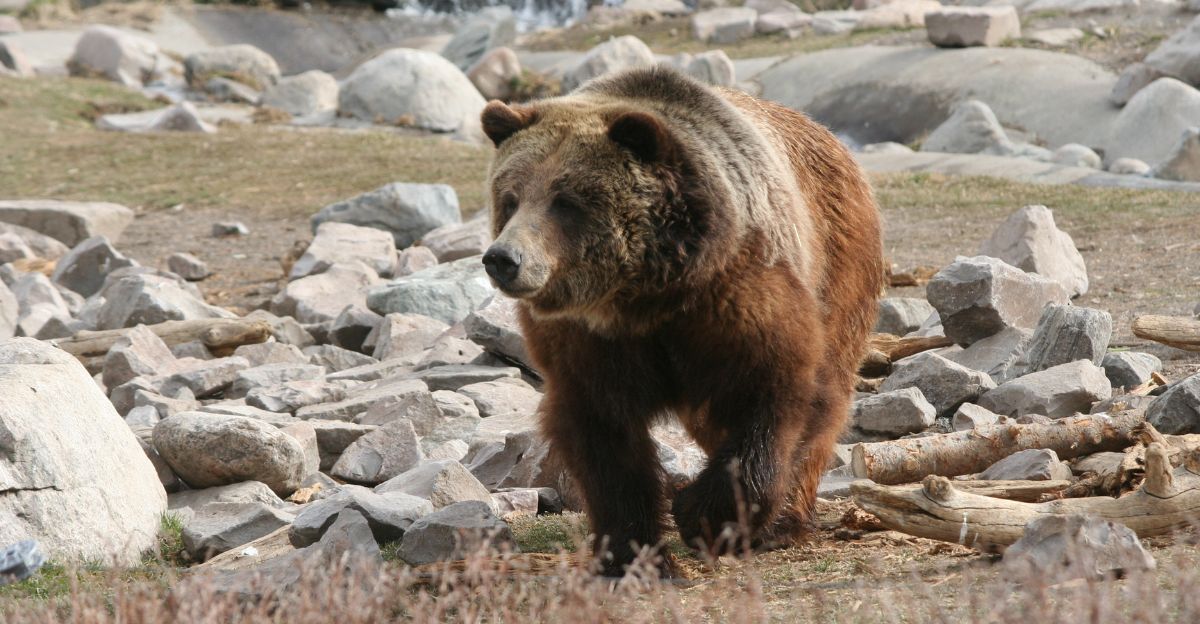
Grizzly bears are among the largest land predators in North America, with males reaching weights up to 1,500 pounds, but lucky for us, despite their size and power, grizzly bear attacks on humans are rare. These bears are powerful diggers and can sprint at 35 miles per hour! Grizzly bears are solitary animals except during breeding or when mothers raise their cubs.
These bears are omnivores, eating everything from berries to fish, and play a crucial role in their ecosystems by influencing prey populations and scattering seeds through their foraging activities. They hibernate in winter, though not as deeply as some might think. Once widespread, their numbers have declined due to habitat loss, but parks like Yellowstone and Glacier remain strongholds for these iconic animals.
3. Bald Eagle
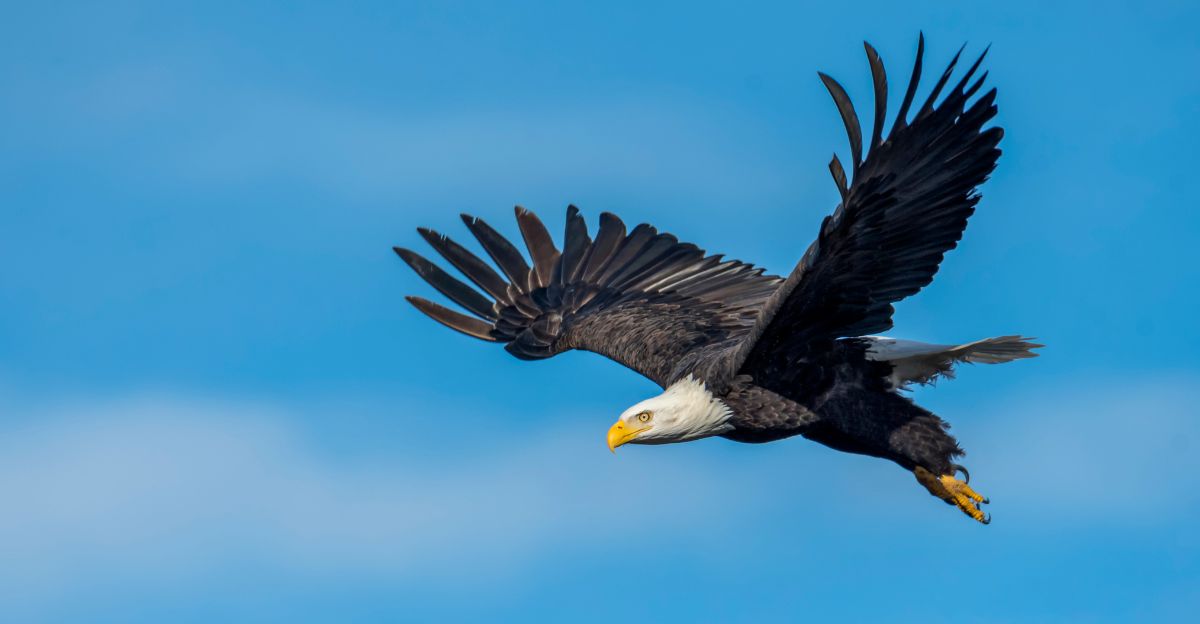
The bald eagle is a majestic sight soaring above America’s national parks with a wingspan reaching up to eight feet. That is why it was chosen as the national symbol in 1782, it represents strength, power, and freedom.
Funny enough, their white head is not a sign of baldness but comes from the old English word “balde,” meaning white.
These birds build massive nests called aeries high in trees, returning to reinforce them year after year. Bald eagles have exceptional vision, allowing them to spot fish from over a mile away, and can dive at speeds up to 100 miles per hour when hunting. Once endangered by hunting and pollution, their populations have rebounded thanks to legal protections, making them a true conservation success story.
4. Gray Wolf
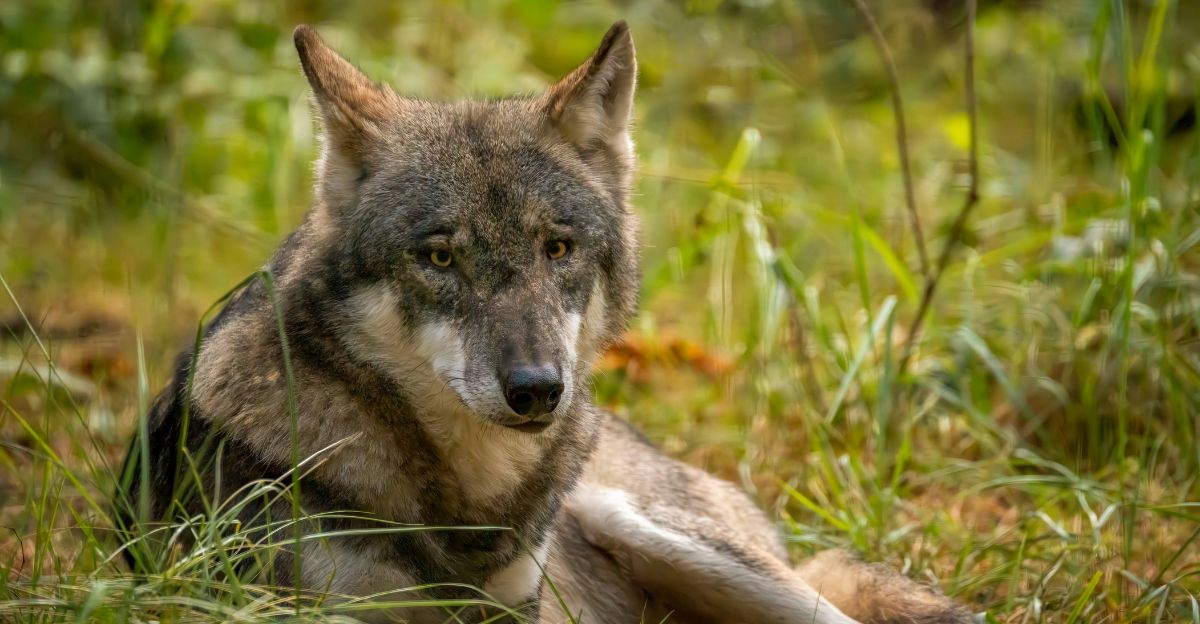
Gray wolves are very social animals, living and hunting in packs that work together to take down prey and protect territory. They communicate through a complex system of howls, barks, and body language. Their howling sounds can be heard up to ten miles away. Wolves have a keen sense of smell, about 100 times stronger than humans, which they use for communication and hunting.
Packs are family groups, with older siblings helping care for pups. Even though gray wolves were once eradicated from much of the U.S., they represent a powerful conservation success. Their return has restored ecological balance, enriched biodiversity, and created unique opportunities for wildlife observation and scientific study.
5. Elk

Elk are among the largest members of the deer family, with mature bulls weighing around 700 pounds and standing five feet tall at the shoulder. Their impressive antlers can grow up to an inch per day in summer and reach four feet above their heads.
If you ever visit Yellowstone or Rocky Mountain you can expect to hear a haunting bugle call during the autumn rut. Visitors are advised to keep at least 25 yards away from elk to avoid dangerous encounters because mother elk can get quite protective of their young when they feel threatened.
Elk in Yellowstone have a seasonal migration pattern, moving with the snowline: they go to higher elevations during summer and descend to lower valleys with less snow in winter.
6. Mountain Goat
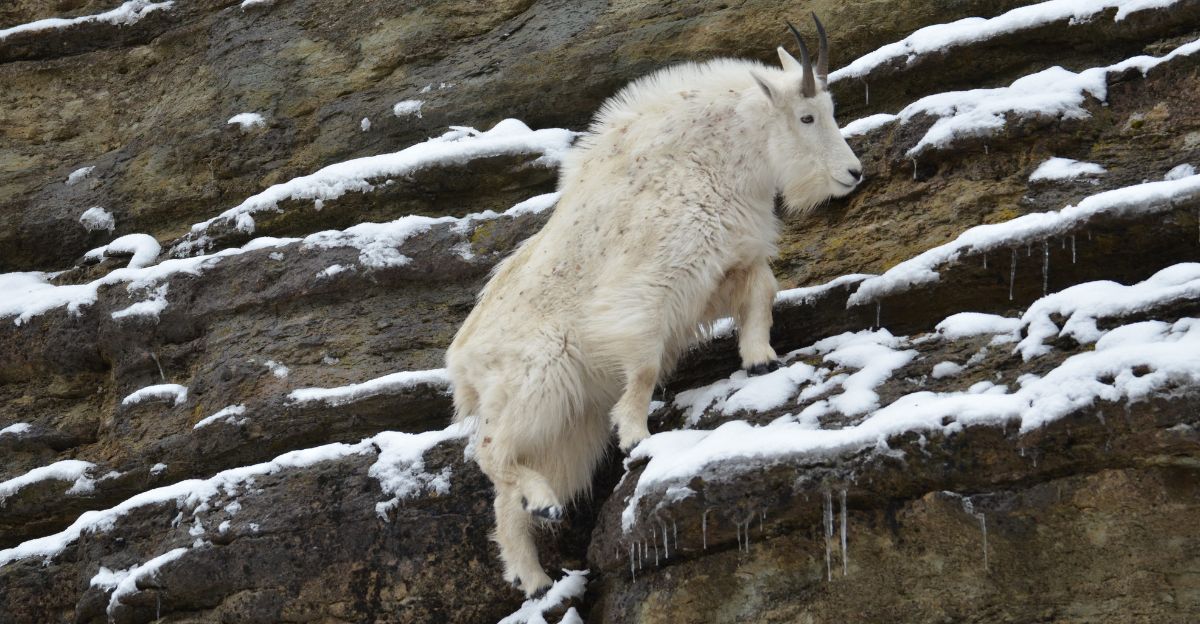
Did you know these little mountaineers are not truly goats but more closely related to the antelope? With their unique hoof structure, muscles, and body movements these agile goats can leap up to 12 feet in a single bound and are often seen scaling sheer cliffs easily.
Mountain goats are the ultimate mountaineers, thriving in the alpine and subalpine environments of parks like the Glacier. Both males (billies) and females (nannies) have sharp, pointed horns, and their thick white coats provide insulation against harsh mountain weather. Mountain goats live in small bands or herds and can live up to 15 years in the wild.
7. Moose

Adult males, called bulls, are famous for their broad, palmate antlers, which can span up to six feet. But these gentle giants might surprise you in their actions. Moose are excellent swimmers and can dive underwater to feed on aquatic plants. When threatened, moose can run up to 35 miles per hour.
The moose is the largest member of the deer family and can be found browsing in the wetlands and forests of Grand Teton and Glacier National Parks. Calves are born in late spring and can stand within hours. Moose are solitary creatures, preferring to roam alone except during mating season or when females are with calves.
8. American Alligator

American alligators are fascinating creatures and true wetland superheroes! These reptiles can grow up to 15 feet long and weigh as much as 900 pounds, making them the largest reptiles in North America. Despite their size, they’re surprisingly good swimmers, using their powerful tails and webbed feet to glide through the water like underwater torpedoes.
Alligators have a quirky dental habit—they can go through 2,000 to 3,000 teeth in a lifetime, constantly replacing worn ones. Fun fact: the temperature of their nest determines the babies’ sex—cooler nests produce females, and warmer nests produce males. And don’t be fooled by their fierce look; mother alligators are gentle caretakers, protecting their hatchlings for up to two years.
9. California Condor
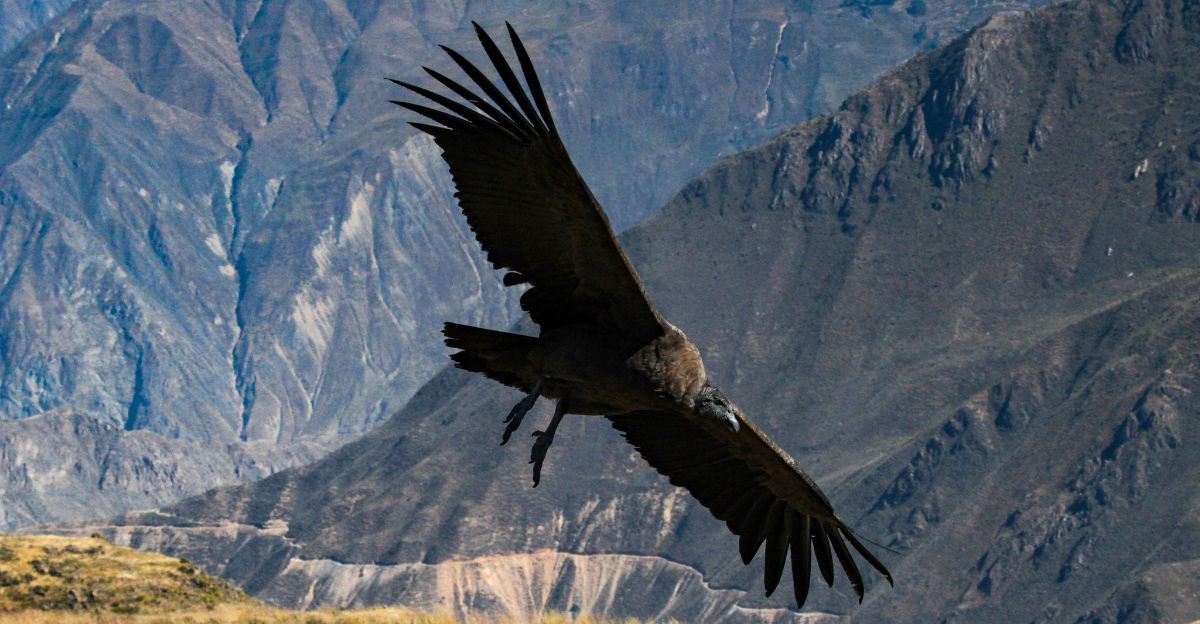
California condors are truly the giants of the sky, boasting wingspans of nearly 10 feet—enough to make even airplanes jealous! These majestic scavengers glide effortlessly over cliffs and canyons in California, Arizona, Utah, and Baja California, searching for carrion to feast on. Despite their intimidating size, condors are surprisingly clean birds, often preening and keeping their bald heads spotless.
They’re long-lived too, with some soaring the skies for over 60 years. After teetering on the brink of extinction in the 1980s, conservation heroes brought them back through captive breeding, and now about 500 condors soar free again—a true comeback story in the wild!
10. Black Bear
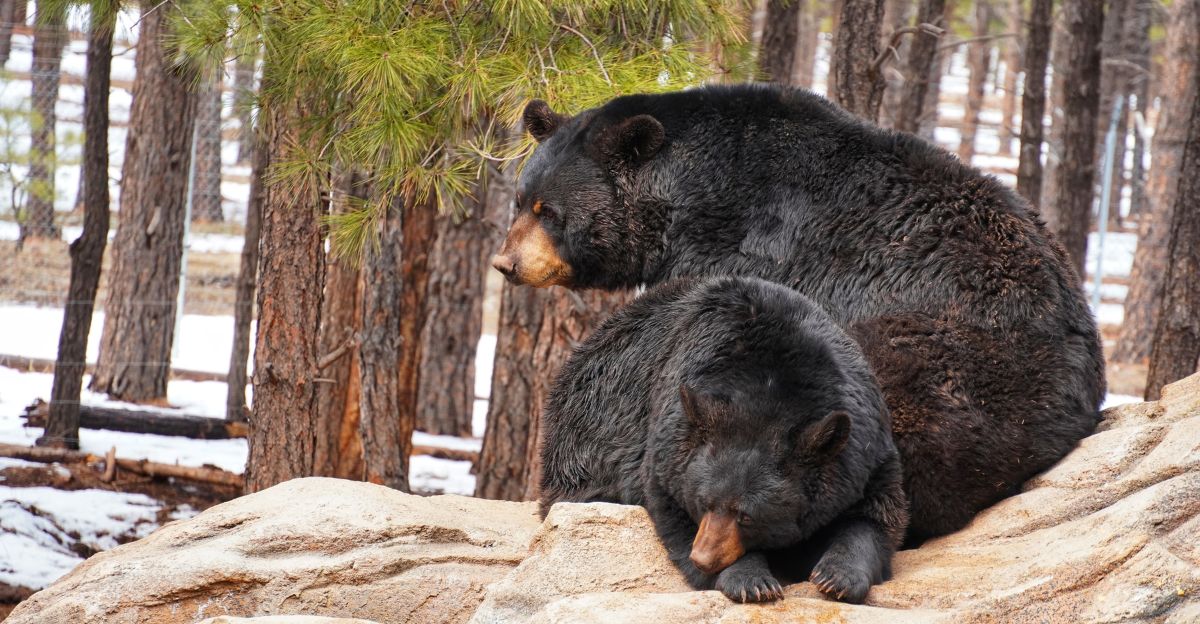
American black bears are surprisingly clever and quite the athletes of the forest! They can sprint up to 35 miles per hour—faster than the fastest human sprinter—and climb 100-foot trees in just 30 seconds, making them expert escape artists. Though called black bears, their fur can be black, brown, cinnamon, or even white!
These curious creatures love to stand on their hind legs to sniff the air, using their incredible sense of smell that’s seven times better than a bloodhound’s. When winter comes, black bears don’t fully hibernate but enter a light sleep called torpor, snoozing in cozy dens while living off their fat reserves.
Explore more of our trending stories and hit Follow to keep them coming to your feed!

Don’t miss out on more stories like this! Hit the Follow button at the top of this article to stay updated with the latest news. Share your thoughts in the comments—we’d love to hear from you!







